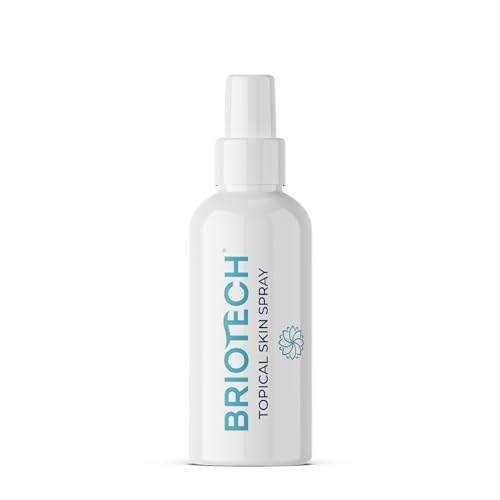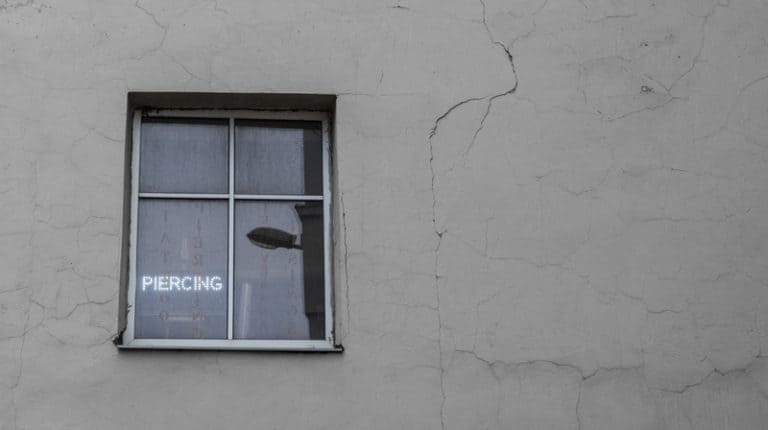If you’ve ever felt the need to take your industrial piercing out, then you’ve probably worried about the hole closing up on you. Whether you want your industrial piercing to close or not, there are a number of factors to take into consideration.
An industrial piercing will close given enough time. The amount of time that it takes for an industrial piercing to close will depend upon how far along in the healing process you are. A fresh industrial piercing may close as quickly as overnight, while an old industrial piercing may take several years.
Let’s take a look at some of the different scenarios that will ultimately impact how long it takes for your industrial piercing to close. In some cases, they may never fully close!
Will My Industrial Piercing Ever Close?
It’s hard to say for certain if your industrial piercing will ever completely close, but we can confidently say that it will continue to shrink over time if left unpierced. The answer depends on a number of factors, including how old your piercing is and how big it is. A new piercing will close much more quickly than an older piercing that’s already healed.
Some customers have reported that their freshly pierced ear closes as quickly as they take the industrial bar out. This is because fresh piercings have not yet developed enough scar tissue to halt the healing process. The human body will work tirelessly to heal your new piercing, against your will, until scar tissue is otherwise formed.
Older industrial piercings that are already healed and have an adequate amount of scar tissue formed will take much longer to close. It can take as quickly as a few weeks to fully close or as long as several years. The good news is that experts claim that a cartilage piercing like an industrial piercing heals more quickly than regular piercing.
The bad news is that some industrial piercings simply won’t ever close all the way. After several years, there may still be a visible impression the size of a needle. Scar tissue may be preventing the hole from healing over completely. Lastly, an industrial piercing is effectively two piercings in one. Each entry hole may heal at a different rate.








Does It Leave A Scar Once Healed?
Scarring is especially common when it comes to industrial piercings. Scarring is most often noticed in the form of a bump. It’s important to understand the differences in these bumps to determine if you have scarring or not. There are three types of bumps to look out for include:
- Pustules: Pustules are comparable to pimples in that they contain pus. They are most commonly caused by allergic reactions. These small bumps are not scars and will completely heal if cared for.
- Granulomas: Granulomas typically surface about six weeks after a piercing. It comes in the form of a lesion that is red in color and is filled with blood rather than pus. Granulomas are often confused with permanent scars. Small granulomas typically heal themselves and don’t require any treatment.
- Keloids: Keloids are caused by an overgrowth of scar tissue. Approximately 10% of individuals experience keloid scarring. Keloids can be surgically removed but may ultimately grow back.
If you think that your industrial piercing site has developed a keloid or any other type of scar, then you should immediately begin treating it with Vitamin E oil or a scarring cream like Moderna. These topical ointments are proven to help minimize the appearance of unwanted scars.
It’s important to remember that any piercing, not just industrial piercings, will likely lead to some sort of scarring. After all, the formation of scar tissue is your body’s natural response to any sort of bodily injury to replace normal tissues. The possibility of scarring should be taken into consideration before getting your industrial piercing.
New Industrial Piercings
If you’re reading this article because you have a new industrial piercing and you don’t want it to close, then this segment is for you. First off, we hope that you chose a high-quality material for your piercing as it will help prevent infection and prevent the need to replace your jewelry. We recommend stainless steel for its antimicrobial properties.
Low-quality materials like coated metals are known to chip and cause infections. If you feel the need to change your industrial piercing because of an allergic reaction or infection, then reach out to whoever pierced your ear for professional advice. Infections are nothing to mess around with!
It’s also important to choose a neutral piece of jewelry so that you don’t feel the urge to change it for the sake of matching an outfit. If you are here because you want to change your jewelry to match an outfit, then stop! Resist the urge to change your industrial piercing until it is fully healed. Don’t risk the piercing closing on itself for just one night.
The reality is that you are at risk of your industrial piercing closing if it is not completely healed. Not only are you at risk for your piercing to close, but you also put yourself at risk for infection. A new piercing can take anywhere from a couple of weeks to heal up to several months. Take good care of it to speed up the process and prevent infection.
Old Industrial Piercings
A completely healed industrial piercing will take much longer to close but is safe to replace without risking a closure. The downside is that your piercing may never completely close as the scar tissue may not heal over. Old industrial piercings may take anywhere from several months to several years to close or reduce in size.
This should be obvious, but a 14G industrial piercing will heal quicker than a 16G piercing due to its size. A 16G piercing is more likely to leave behind a bump or a scar since it has effectively increased the surface area of your wound where scar tissue could develop.
At this point in your piercing journey, if a keloid hasn’t already formed, then it likely won’t when you take it out. If you already have a keloid, then it comes down to scar management. Use your scarring cream consistently to reduce its size. A keloid may also get in the way of your industrial piercing ever completely closing.
Keloid or not, there is scar tissue in your ear whether you notice it or not. To hasten the healing process, we recommend using Vitamin E oil or scarring cream like Moderna on a regular basis. This will hasten the healing process and minimize the possibilities of developing any lasting and noticeable scarring.
Can I Sleep Without My Industrial Piercing?
If you want to sleep without your industrial piercing, your first going to have to analyze how far along you are in the healing process. If you are freshly pierced, then you’ll have to tough out the pain and sleep with it in. If you have had your piercing for several years, then you’re probably okay to sleep without it for a night or two.
We understand that new industrial piercings can be particularly painful to sleep with, but you must resist the urge to take it out when sleeping. Try sleeping flat on your back rather than on your side. Even better, roll over to your side and keep your pierced ear up in the air in the night. It will certainly be uncomfortable at first, but it will get better!
An old industrial piercing can be removed when sleeping. Just be sure that your piercing is completely healed. Also, remember to put it back in first thing in the morning. Keep in mind that a piercing can close ever so slightly in a short amount of time, sometimes slightly enough to make it hard to get that piercing back in. Don’t risk it!
In Summary
Whether you want your industrial piercing to close or not, we hope that this article shed some light on how quickly it can take for an industrial piercing can close. The most important takeaway here is that the age of your piercing is directly proportional to how long it will take to close.
A new piercing can close in a matter of minutes. Do not prematurely change your jewelry as you run the risk of infection and also run the risk of your hole closing prematurely. Wait until your piercing is fully healed before you switch it out.
Older piercings will take longer to close. Scar tissue like a keloid may get in the way of the healing process and prevent it from fully closing altogether. We recommend using a scarring cream to help move the healing process along. Although it’s okay to swap jewelry at this point, you shouldn’t keep your piercing out for extended periods of time.

